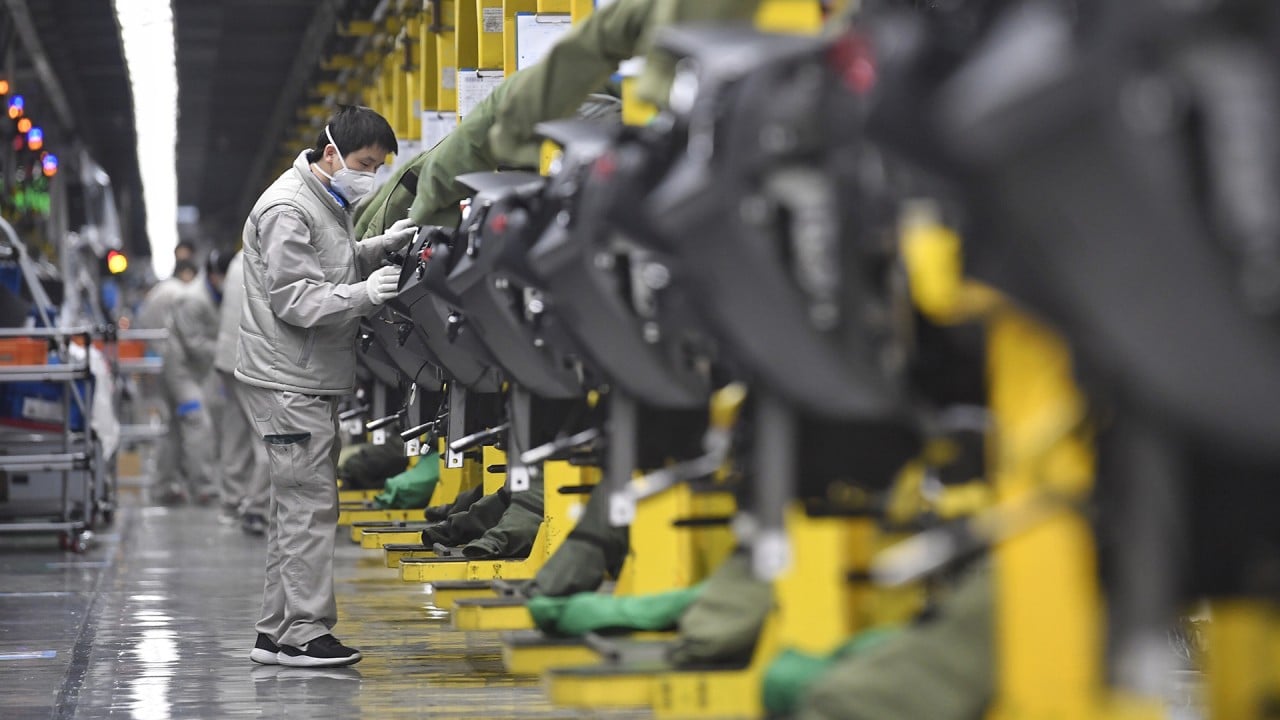
Explainer | What is behind China’s US$1.4 trillion stock market rout, what are officials saying and can we expect a bailout?
- Valuations of CSI 300 Index members, based on price-earnings ratios, reached their highest levels in mid-2015, just before a mammoth stock crash that year
- Chinese stocks rose about 2.5 per cent on Thursday, as market bulls pushed the index to its best gains in two months
The nation’s economic prowess and growing influence has encouraged MSCI, FTSE Russell and other index compilers to boost its weighting in global benchmarks over the past two years, luring funds and helping propel domestic stocks to US$11.8 trillion to a peak on February 21. Since that euphoric day, however, more than US$1.3 trillion in value has been erased from the two primary onshore bourses.
Some analysts have cautioned the slump may have further room to go as valuations hit pre-2015 crash levels. Speculation about a bailout may emerge if the sell-off persists. Here’s a quick take on the current market dynamics.
What happened in the market over the past year?
The Covid-19 outbreak, first detected in Wuhan in China’s central Hubei province in late 2019, prompted a citywide lockdown on the eve of Lunar New Year. Local stocks weakened, presaging a full-blown global market meltdown by March 2020.
The Shanghai Composite Index crashed to a 13-month low on March 23, leaving stocks on the cusp of bear-market territory. The CSI 300, which tracks the biggest stocks in Shanghai and Shenzhen, had slumped 16 per cent by that time.
The Shanghai Composite closed the year with a 14 per cent gain. The liquidity-driven ChiNext gauge of small-cap and technology stocks surged by a stunning 65 per cent.
What has been going on over the past month?
As bullish sentiment built, some parts of the market began to exhibit signs of frothiness on the valuation front. Money managers kept ploughing more cash into perennial favourites, from traditional liquor-distilling companies to unprofitable technology and new-energy companies, while pushing valuations to multi-year highs.
Another alarm was setting off some 12,000km away. US government bonds began to crack under inflation risks and taper tantrums, driving the benchmark 10-year Treasury yield up to a one-year high of about 1.6 per cent on March 8.
What are Chinese officials and top investors saying about China’s stocks?
So far, he is the only senior government official to have broached the subject. While Guo did not single out Chinese stocks, his reference to overseas financial markets and local property markets spooked investors, indicating authorities were alert about market risks.
Lu Bin, a top-performing fund manager at HSBC Jintrust Fund Management, remains cautious on stocks, citing elevated valuations and the prospect of policy normalisation that will become headwinds for sectors that have chalked up hefty gains.
“We might see more of a rotation to the wider economy and less investors chasing momentum stocks and also [high-valuation] stocks,” said Sean Taylor, Asia-Pacific chief investment officer at money manager DWS. A lot of the stocks that have gone to great valuations, whether it’s in e-commerce or digitalisation, or in technology with great business models, they “just went up too much”, he said at a media briefing on Thursday.
Can we expect a bailout?
China’s state-backed funds, or so-called “National Team” created to counter the stock market crash in 2015, failed to stem the sell-off in that episode. The Shanghai Composite dropped by more than 30 per cent five months after they officially started buying in July that year.
The authorities are usually tightlipped about market interventions, though policy fine-tuning and warnings about excessive leverage in industries are common.
What are retail investors and money managers doing with their cash amid the shakeout?
Mutual fund redemptions by retail investors have contributed to the turbulence, while new fund launches have cooled, forcing money managers to trim their holdings in market favourites, compounding the vicious selling circle.
In Hong Kong, the slump in Chinese technology juggernauts has been most pronounced, with the Hang Seng Tech Index tumbling by as much as 27 per cent from an all-time high on February 17. By March 8, the ATM trio of Alibaba Group Holding, Tencent Holdings and Meituan had fallen by 12 per cent to 27 per cent from their record highs.
Foreign investors were net sellers of Chinese stocks this month through Wednesday, according to Stock Connect statistics. They bought 81.2 billion yuan (US$12.5 billion) worth in the first two months of 2021 and 208.9 billion yuan in 2020.
Separately, mainland investors have taken HK$19.8 billion (US$2.6 billion) off the table from the Hong Kong stock market so far this month, versus HK$386 billion of net purchases in January to February, and HK$1.06 trillion in all of 2020.
Have stocks slumped this much during China’s ‘two sessions’ proceedings earlier?
Stocks tumbled during a significant week when China’s political elites, policymakers and industry captains were wrapping up meetings to evaluate the nation’s achievements and define its targets for 2021 and beyond. The Communist Party of China will also commemorate its centenary in July.
What are technical indicators signalling about market direction?
By one technical indicator, the most ferocious phase of selling may have passed. The 14-day relative strength index for the Shanghai Composite and the CSI 300 Index fell to as low as 34, approaching the 30 level deemed as oversold.
The current readings are also near the lowest points seen during the worst days of the Covid-19 sell-off in late March last year.
The proportion of the stocks that are holding above the 200-day moving average, typically seen as a dividing line between bull and bear sentiment, is around 30 per cent against more than 60 per cent in December, according to Bloomberg data. Only 1 per cent of the stocks in Shanghai are fetching higher than their levels a year ago.
The Shanghai Composite is 3.4 per cent away from slipping below its 200-day moving average, a bearish technical signal.
Additional reporting by Martin Choi


